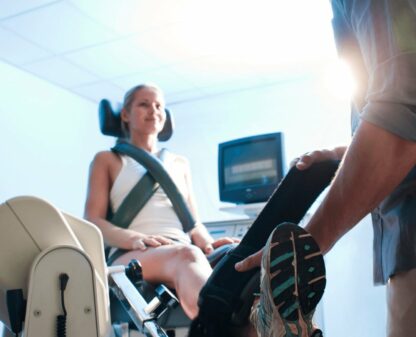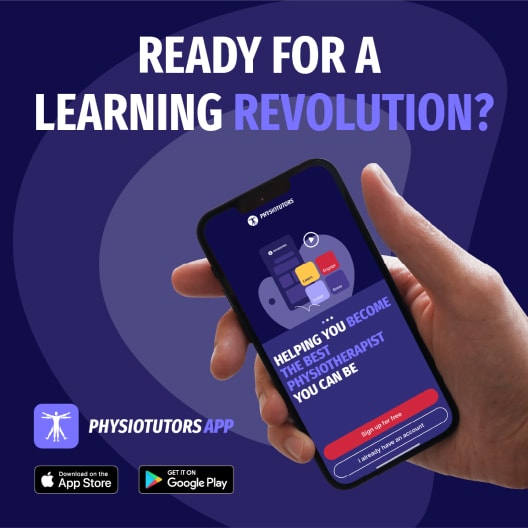ACL Injury Prevention: How Exercise Shapes Knee Motion
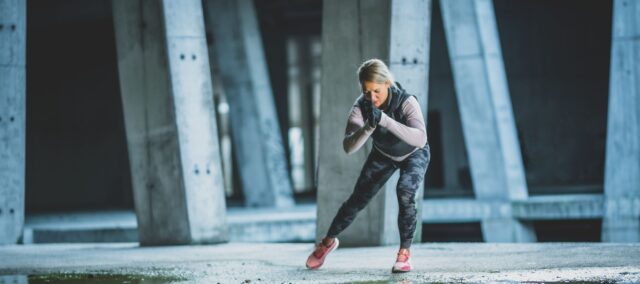
Introduction
Anterior cruciate ligament (ACL) injuries are a significant concern in athletes, and exercise-based injury prevention programs (IPPs) aim to reduce this risk by modifying knee motion patterns, such as increasing knee flexion and reducing knee valgus. These programs often include a mix of neuromuscular training components like plyometrics and core stability. Previous studies have demonstrated conflicting evidence regarding the effectiveness of multicomponent IPPs in modifying knee motion patterns and further reducing ACL injury risk. Traditional meta-analyses have struggled to assess the comparative effectiveness of different IPP components due to limitations in analysing multiple interventions simultaneously. To address this, the authors use a Bayesian network meta-analysis (NMA) to evaluate and rank the impact of various IPPs on knee motion patterns during vertical jumps and cutting movements, both common tests for ACL injury risk. This research seeks to clarify which specific components of IPPs are most effective in modifying knee motion, offering new insights for optimizing ACL injury prevention strategies.
Methods
This study followed PRISMA 2020 guidelines for systematic reviews and meta-analyses. It aimed to evaluate exercise-based interventions designed to reduce ACL injury risk by modifying knee motion patterns, focusing on knee valgus and knee flexion during athletic movements. Studies were selected based on the PICOS framework, including physically active athletes without lower extremity injuries who participated in regular sports training. The interventions were exercise-based programs aimed at ACL injury prevention, while the control group consisted of athletes following their usual training routines.
Eligibility Criteria
Studies with exercise-based interventions targeting ACL injury prevention. The participants in the study were athletes, with biomechanical measurements of knee flexion and valgus assessed using motion analysis systems, such as the drop vertical jump (DVJ), single-drop vertical jump (SDVJ), and side-step cutting (SSC) tests.
Study Selection & Data Collection
After screening for duplicates and assessing full-text articles, data were extracted using a pre-designed form, which included details like sample size, intervention specifics, and biomechanical outcomes. Missing data were followed up with authors. Studies with high risk of bias, insufficient data, or lacking a control group were excluded.
Risk of Bias & Certainty of Evidence
The risk of bias (ROB) was assessed using the Cochrane tool, and the certainty of evidence was evaluated through the GRADE approach for network meta-analysis (NMA). The authors assessed the quality of reporting using the TIDieR and CERT checklists.
Data Analysis
Pairwise meta-analyses were performed using random-effects models to calculate mean differences (MDs) for knee flexion and valgus angles. Bayesian network meta-analysis was conducted to compare different IPPs, incorporating both direct and indirect evidence. The potential effectiveness of the exercise intervention was evaluated using the surface under the cumulative ranking curve (SUCRA), which quantifies the probability of an intervention being ranked as most effective. Higher SUCRA values indicate greater effectiveness, while lower values suggest the intervention is less effective. Consistency within the network was assessed using the node-splitting technique, with a P-value threshold of 0.05 indicating whether observed consistency could be attributed to chance or random variation.
Separate analyses were done for jumping and cutting tests, accounting for movement-specific differences. Sensitivity analyses were performed, including excluding small sample studies and focusing on those with 3D motion analysis systems. Funnel plots were used to assess publication bias.
Results
Out of 891 initially identified records, 22 randomized controlled trials (RCTs) met the inclusion criteria. These trials studied 878 participants and evaluated 12 different exercise-based prevention programs (IPPs). Participants were athletes engaged in various sports, including soccer, basketball, volleyball, and gymnastics. Interventions ranged from 1 to 10 weeks, with training frequencies of 2-5 times per week.
Interventions
The IPPs included neuromuscular training, core stability exercises, plyometric training, self-visual and expert-visual feedback, external and internal focus of attention, agility training, and other sports-specific injury prevention programs.
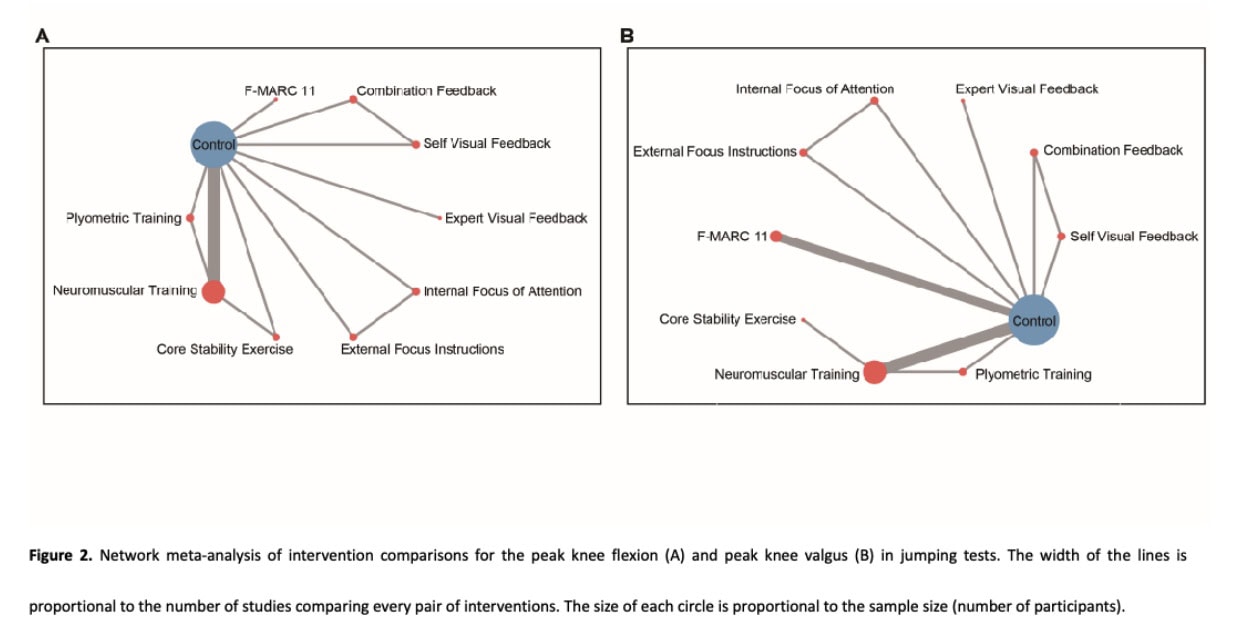
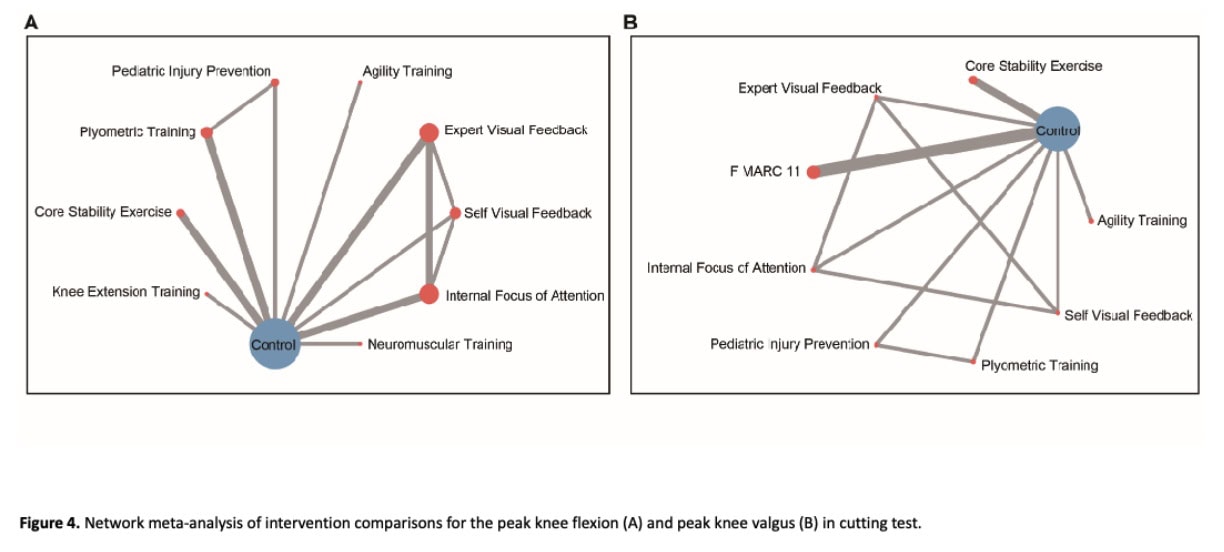
Risk of Bias and Reporting Quality
While all 22 studies provided sufficient randomization details, most did not blind participants or personnel. Reporting quality was high (TIDieR checklist: ≥9/12 items reported in 20 studies). CERT scores ranged from 9 to 14/16, though non-exercise arrangements and control strategies were underreported.
Key Findings
Jumping Tests
External focus instructions (MD=26, CrI=7.5 to 44) and internal focus of attention (MD=19, CrI=0.19 to 37) significantly improved knee flexion compared to controls. Core stability training significantly reduced knee valgus (MD=-4.40, CrI=-7.7 to -1.1). Other IPPs showed no statistically significant effects.
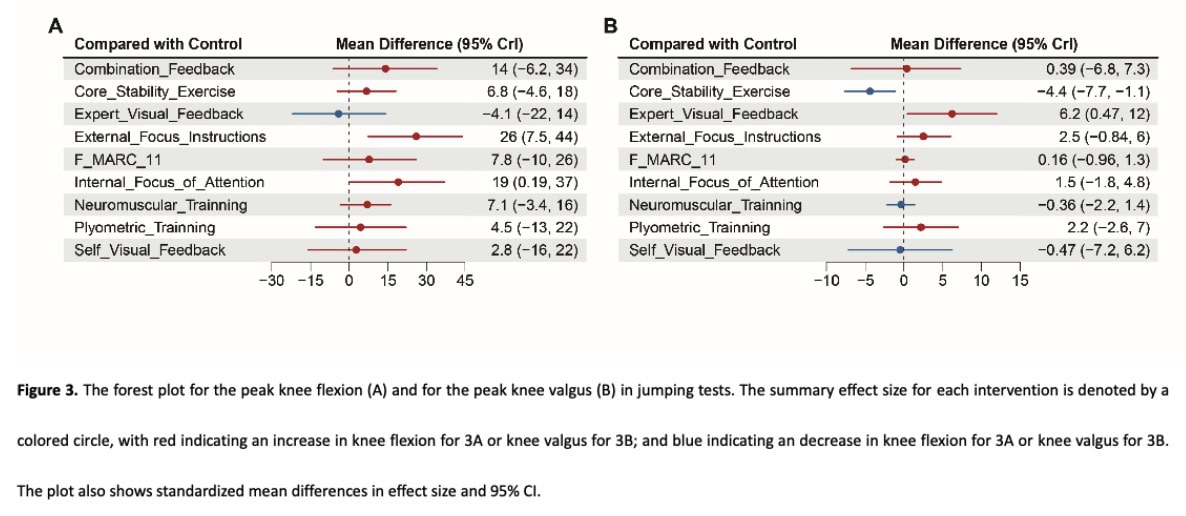
Cutting Tests
None of the interventions significantly affected knee flexion or knee valgus during cutting movements.
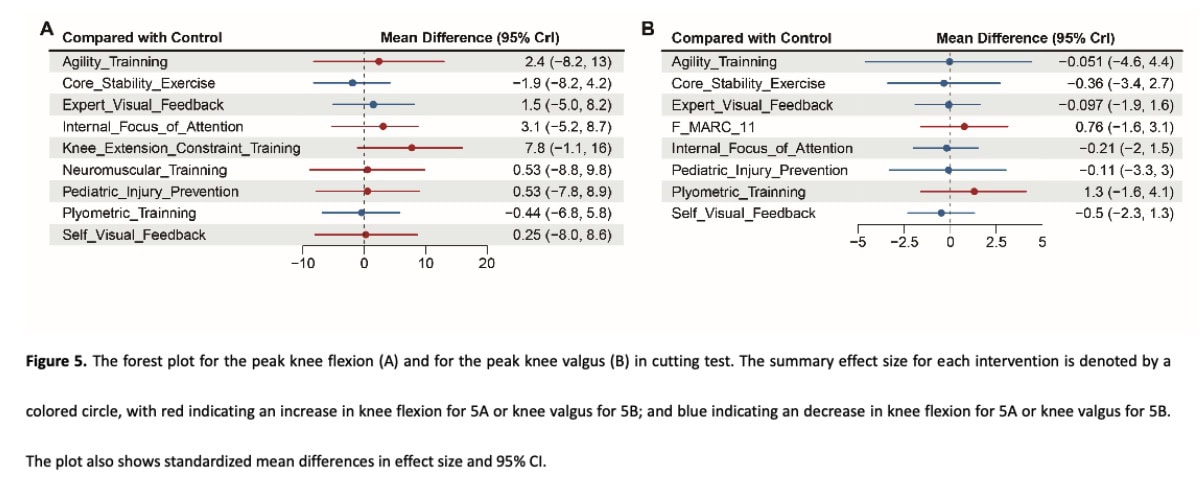
Ranking of Interventions (SUCRA)
- Knee Flexion (Jumping): External focus instructions ranked highest (SUCRA=0.94), followed by internal focus of attention (SUCRA=0.81).
- Knee Valgus (Jumping): Core stability training was most effective (SUCRA=0.96).
- Cutting Tests: Internal focus of attention (SUCRA=0.66) improved knee flexion, while core stability training (SUCRA=0.88) ranked highest for reducing knee valgus.
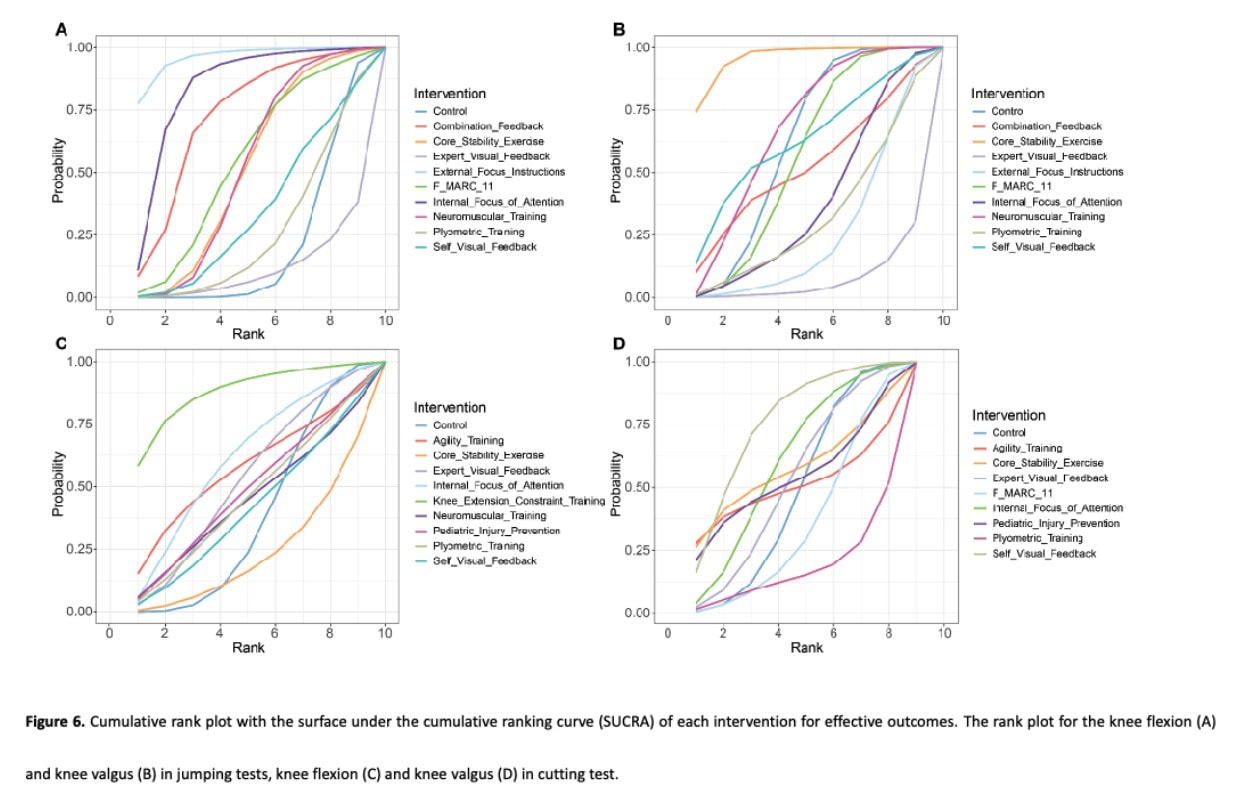
Heterogeneity and Bias
No substantial heterogeneity or publication bias was detected. Certainty of evidence was moderate for the top-ranked interventions in jumping tests but downgraded due to risks of bias and indirectness.
Sensitivity Analysis
Findings were consistent for jumping tests but not significant for cutting tests.
Certainty of evidence
Exercise-based prevention programs, particularly those incorporating external focus instructions, internal focus of attention, and core stability training, effectively improve knee mechanics (knee flexion and valgus) during jumping tests. However, these interventions are less effective for cutting tests. Reporting quality was high, but blinding and control strategy details were often lacking. Evidence certainty was moderate for top interventions in jumping tests.
Questions and thoughts
The single-leg jump test, bilateral jump test, and cutting movements are commonly used to assess ACL injury risk. This study takes a mechanistic approach, focusing on how excessive force on specific structures leads to injury, but this may oversimplify the complex interactions involved in athletic performance. Injuries are influenced by various factors, and there is growing interest in biopsychosocial and environmental influences. It is important to question what other factors may contribute to injury, which could help explain inconsistent findings on the effectiveness of ACL prevention programs. Variability in training frequency and volume further adds to these inconsistencies.
Several interesting findings emerge when discussing these interventions. Instructions emphasizing external and internal attentional focus have been shown to significantly increase knee flexion during jump tests. However, external focus often depends on feedback, raising the question of whether such improvements in controlled environments translate into actual sports performance. Although external focus is thought to enhance motor control, it is challenging to determine whether these benefits transfer to real-life athletic tasks.
None of the interventions in this study were able to modify knee flexion or valgus during side-step cutting tests. The researchers hypothesized that this is because sidestep and cutting movements involve multidirectional forces and rapid changes of direction, making these tasks more complex and less influenced by standard interventions. This suggests the need for motor control exercises, enhanced with feedbacks, that are highly specific and focus on the quality of the movement itself. Another possible explanation for the lack of results in the cutting test is that participants prioritized performance over joint safety during these tasks, which likely increased mechanical stress on the knee.
Talk nerdy to me
Let’s delve deeper into the NMA, Bayesian framework, and SUCRA used in this study.
Network Meta-Analysis (NMA) is a powerful tool used in this study to compare multiple ACL prevention programs, even when head-to-head comparisons between all interventions don’t exist. Unlike traditional meta-analyses, NMA combines both direct evidence (e.g., Program A vs. Program B) and indirect evidence (e.g., Program A vs. Program C, then Program C vs. Program B) to create a “network” of interventions. This allowed the authors to assess how various programs, like core stability exercises and focus-based motor control training, ranked against each other across different tasks.
The study employed a Bayesian framework within NMA, which goes beyond traditional frequentist approaches by incorporating prior knowledge and generating probabilities for each intervention’s effectiveness. Bayesian analysis provides credible intervals (akin to confidence intervals), accounting for variability and uncertainty in the results. This makes the findings more applicable to real-world settings, as they reflect a range of likely outcomes rather than a single point estimate.
The SUCRA scale (Surface Under the Cumulative Ranking) takes NMA results a step further by quantifying how effective each intervention is on a 0–100% scale. A higher SUCRA score indicates a higher likelihood of being the most effective intervention. In this study, interventions like core stability exercises scored highly for reducing knee valgus during jump tests, while sidestep cutting tasks showed lower scores, reflecting their resistance to improvement through current programs.
Take-home messages
This study highlights the complexity of ACL injury prevention and the need for a nuanced, evidence-based approach. Prevention programs, such as core stability exercises and focus-based attention strategies, can improve knee valgus and flexion biomechanics during controlled tasks like single-leg and bilateral jump tests. However, these interventions show limited efficacy in improving movement patterns during more complex tasks like sidestep cutting, where performance demands may outweight joint safety considerations.
For clinicians, this underscores the importance of tailoring interventions to the specific demands of the athlete’s sport. Exercises should replicate the multidirectional, high-stakes movements athletes face in competition to ensure carryover. Additionally, attention should be given to integrating external focus cues and feedback, as these strategies show promise for improving motor control. Integrating external focus, i.e., directing the athlete’s attention to an external cue, can be achieved by using cones, sticks, or other equipment to guide movement. For example, during a single-leg jump from a box, place a cone near the landing area and instruct: “When landing, your knee should lightly touch the bottom edge of the cone.” This external focus encourages proper knee alignment and helps prevent knee valgus.
Finally, while biomechanical improvements are vital, ACL injury prevention cannot rely solely on mechanics. Physical therapists should adopt an ecologically holistic approach, recognizing that real-world performance and injury risk are influenced by a combination of biomechanical, psychological, and environmental factors.
Learn more
Reference
LEARN TO OPTIMIZE REHAB & RTS DECISION MAKING AFTER ACL RECONSTRUCTION
Sign up for this FREE webinar and top leading expert in ACL rehab Bart Dingenen will show you exactly how you can do better in ACL rehab and return to sport decision making
